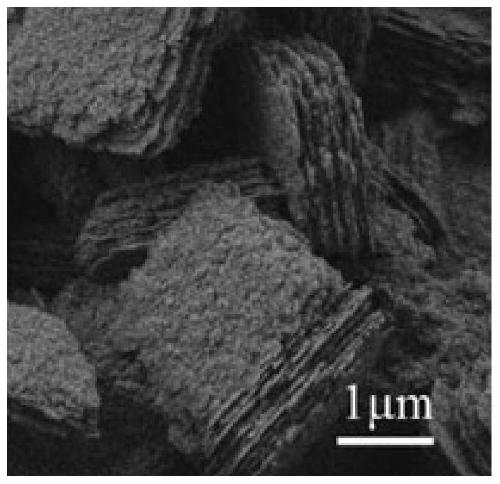Hierarchical porous ssz-13 molecular sieve with micropores and mesopores and its synthesis method and application
A synthesis method and molecular sieve technology, applied in the direction of molecular sieve catalysts, chemical instruments and methods, crystalline aluminosilicate zeolites, etc., can solve the problems of inapplicable porous structure synthesis, harsh control conditions of the synthesis process, etc., to reduce production costs, Wide application prospects, the effect of broad application prospects
- Summary
- Abstract
- Description
- Claims
- Application Information
AI Technical Summary
Problems solved by technology
Method used
Image
Examples
Embodiment 1
[0054] According to the list in Table 1, the reaction raw material ratio weighs quantitative polyquaternium salt and dissolves it in deionized water to form a solution, stirs and disperses, then adds silicon source and alkali source, and stirs at 40 ° C for 6 hours to obtain silicon source Mixed solution; at 60°C, add the aluminum source solution dropwise to the silicon source mixed solution according to the proportion of the reaction raw materials, stir vigorously for 90 minutes, and then stand and age for 12 hours to obtain the mixture gel. Place the mixture gel in a hydrothermal synthesis kettle at 120-190°C for crystallization in two stages, the temperature of the second stage is 20°C higher than that of the first stage, after the crystallization is complete, centrifuge to separate the solid product, and then use the solid product Repeated washing with deionized water until neutral, then drying at 120°C for 24 hours, and roasting at 550°C for 4 hours to remove the organic t...
Embodiment 2
[0061] The SSZ-13 molecular sieve samples 1-20 synthesized in Example 1 were characterized and analyzed using a Micromeritics ASAP 2020 nitrogen physical adsorption instrument. The pretreatment method of the sample before analysis is as follows: vacuumize the molecular sieve sample at room temperature, and when the vacuum condition is reached, treat it at 130°C for 2h; then treat it at 350°C for 2h. The nitrogen physical adsorption results show that samples 1-20 have micropores with a diameter of 0.3-0.5 nm, all of which contain mesoporous structures.
[0062] table 3
[0063]
[0064]
Embodiment 3
[0066] Samples 1-20 prepared in Example 1 were characterized by XRD to confirm that they were SSZ-13 molecular sieves. The instrument used is a PANalytical X’Pert X-ray diffractometer, a copper target, and a Kα radiation source. The operating voltage of the instrument is 40kv, and the operating current is 40mA. The obtained XRD spectrum of samples 1-20 and the characteristic spectrum of standard SSZ-13 molecular sieve Figure 1 Sincerely. Typical XRD patterns (such as image 3 ) is represented by sample 1, and the positions and peak intensities of the main diffraction peaks at 2θ between 5° and 50° are shown in Table 4. Compared with sample 1, other sample data results have the same diffraction peak position and shape, and the relative peak intensity fluctuates within ±5% according to the change of synthesis conditions, indicating that the synthesized product has the characteristics of SSZ-13 molecular sieve structure.
[0067] Table 4
[0068] Characteristic pea...
PUM
| Property | Measurement | Unit |
|---|---|---|
| specific surface area | aaaaa | aaaaa |
| degree of polymerization | aaaaa | aaaaa |
Abstract
Description
Claims
Application Information
 Login to View More
Login to View More - R&D
- Intellectual Property
- Life Sciences
- Materials
- Tech Scout
- Unparalleled Data Quality
- Higher Quality Content
- 60% Fewer Hallucinations
Browse by: Latest US Patents, China's latest patents, Technical Efficacy Thesaurus, Application Domain, Technology Topic, Popular Technical Reports.
© 2025 PatSnap. All rights reserved.Legal|Privacy policy|Modern Slavery Act Transparency Statement|Sitemap|About US| Contact US: help@patsnap.com



